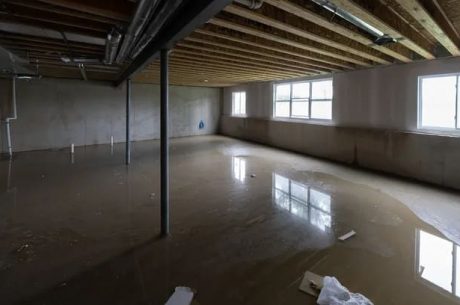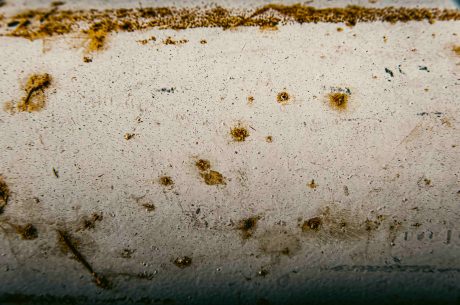Table of Contents
When your home floods, whether from heavy rain, a burst pipe, or a sewage backup, one of the biggest concerns you face afterward is mold growth. Mold doesn’t just create unsightly stains—it can damage your property, impact indoor air quality, and even cause health issues if not addressed quickly.
Many homeowners underestimate just how quickly mold can develop after water damage, which often leads to bigger restoration problems down the road. So, how long does it actually take for mold to grow in a flooded home? The answer may surprise you.
Mold Growth Timeline After Flooding
Mold spores are microscopic and exist almost everywhere in the environment, both indoors and outdoors. When excess moisture and organic materials are present—like wood, drywall, carpet, and insulation—these spores can quickly take hold.
- Within 24 to 48 Hours: Mold can begin to grow on damp surfaces. In fact, the CDC and EPA both confirm that mold starts forming within this short window if moisture is not removed.
- Within 72 Hours: You may already start to see visible mold patches, especially in dark, poorly ventilated areas like basements, behind walls, or under flooring.
- After 1 Week: Mold can spread extensively, damaging structural materials and creating strong, musty odors that are difficult to remove.
- After Several Weeks: The infestation may require not just cleanup but also removal and replacement of contaminated building materials, which can be costly and disruptive.
The speed of growth depends on several factors, including temperature, humidity, and the materials affected. Warm, damp conditions accelerate mold development significantly.
Why Mold Spreads So Quickly in Flooded Homes
After a flood, water doesn’t just soak into obvious places like carpets and furniture—it also seeps behind walls, into insulation, under flooring, and even into structural framing. These hidden moisture pockets create the perfect breeding ground for mold. Because you can’t always see where water has traveled, mold often takes hold in unseen areas until it’s already widespread.
Humidity also plays a huge role. A flooded home creates high moisture levels in the air, meaning even areas that didn’t directly touch floodwater can still become vulnerable to mold growth. Without proper drying and dehumidification, your home essentially becomes an incubator for mold.
Risks of Ignoring Mold After Flooding
Some homeowners think they can wait and deal with mold later, but delaying cleanup has serious consequences:
- Health Risks: Mold exposure can trigger allergies, asthma, respiratory irritation, and other health concerns, especially for children, elderly individuals, and those with weakened immune systems.
- Structural Damage: Mold weakens drywall, wood, and insulation, eventually compromising the structural integrity of your home.
- Odors: That musty, earthy smell associated with mold can linger long after the water has dried, making your home unpleasant to live in.
- Rising Costs: The longer you wait, the more extensive the cleanup becomes. Quick intervention prevents expensive repairs and replacements later.
How to Prevent Mold Growth After Flooding
Since mold growth begins within the first 24 to 48 hours, acting fast is critical. Here are key steps homeowners should take:
- Remove Standing Water Immediately: The longer water sits, the more opportunity mold has to grow.
- Dry All Affected Areas Thoroughly: Industrial fans, heaters, and dehumidifiers are necessary for proper drying. Simply opening windows isn’t enough.
- Dispose of Unsalvageable Items: Carpets, insulation, and porous materials often cannot be fully cleaned and should be removed.
- Sanitize Surfaces: Cleaning with antimicrobial solutions helps prevent spores from reactivating.
- Call a Professional Restoration Team: Trained specialists have the tools, knowledge, and equipment to ensure your home is fully dried, sanitized, and protected against mold.
Why Professional Mold Remediation Matters
While DIY cleanup may seem tempting, most homeowners don’t have the equipment needed to detect hidden moisture or the protective gear required to safely handle mold. Professionals use moisture meters, infrared cameras, commercial-grade dehumidifiers, and advanced cleaning techniques to eliminate mold at its source. This not only saves your home from long-term damage but also safeguards your family’s health.
Protect Your Home and Health with Professional Help
If your home has been flooded, you don’t have time to wait—mold is already on the clock. The best way to prevent a minor problem from becoming a major disaster is to bring in experts as soon as possible.
At Puroclean, we specialize in water damage restoration and mold remediation. Call us on (206) 929-0155 for mold removal services. Our team responds quickly, assesses hidden moisture, dries out your home thoroughly, and applies proven treatments to stop mold in its tracks. With our expertise, you can rest assured that your property and family are protected.
Don’t let mold take over your home after flooding. Call us today for immediate professional assistance and peace of mind knowing your home is in expert hands.

Mold can begin growing in as little as 24 hours after flooding. The sooner you act, the easier it is to prevent damage and protect your home. With professional help, you can stop mold before it spreads and restore your home to a safe, healthy living environment.



